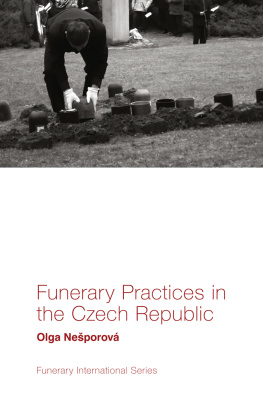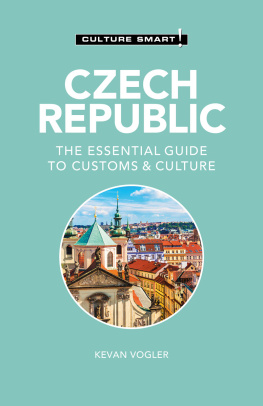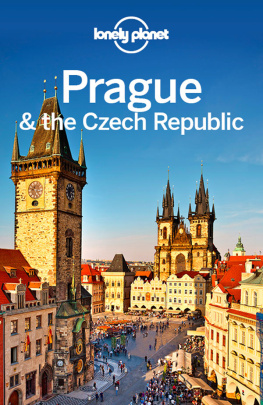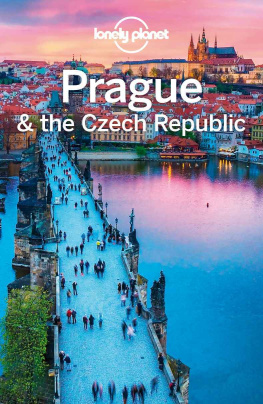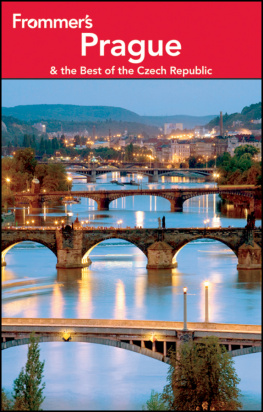Funerary International
Series Editor: Julie Rugg, University of York, UK
The study of mortality is now an established academic endeavour which is rapidly expanding in scale and in disciplinary reach. One missing element is a repository of basic facts about funerary practice in each country and the broader legal, governance and denominational frameworks for those practices which might serve to set more detailed research in context.
This book series remedies this absence by producing country-specific monographs, with texts providing a standard framework of questions, which ensures even coverage; aids international comparison; fosters international linkages across the academic community; and inspires new research directions. These texts will be a valuable resource for researchers across the humanities and social sciences concerned with death and funerary customs.
Previous titles in this series
Julie Rugg and Brian Parsons, Funerary Practices in England and Wales
Brenda Mathijssen and Claudia Venhorst, Funerary Practices in the Netherlands
Forthcoming in this series
Maija Butters and Ilona Pajari, Funerary Practices in Finland
Sergei Mokhov, Funerary Practices in Russia
Aleksandra Pavievi, Funerary Practices in Serbia
Jos Francisco Ferreira Queiroz, Ana Rafaela Ferraz Ferreir and Ana Jlia Almeida Miranda, Funerary Practices in Portugal
Christoph Streb, Funerary Practices in Germany
FUNERARY PRACTICES IN THE CZECH REPUBLIC
OLGA NEPOROV
Research Institute for Labour and Social Affairs, Czech Republic
United Kingdom North America Japan India
Malaysia China
Emerald Publishing Limited
Howard House, Wagon Lane, Bingley BD16 1WA, UK
First edition 2021
2021 Olga Neporov. Published under exclusive licence by Emerald Publishing Limited.
Reprints and permissions service
Contact:
No part of this book may be reproduced, stored in a retrieval system, transmitted in any form or by any means electronic, mechanical, photocopying, recording or otherwise without either the prior written permission of the publisher or a licence permitting restricted copying issued in the UK by The Copyright Licensing Agency and in the USA by The Copyright Clearance Center. Any opinions expressed in the chapters are those of the authors. Whilst Emerald makes every effort to ensure the quality and accuracy of its content, Emerald makes no representation implied or otherwise, as to the chapters' suitability and application and disclaims any warranties, express or implied, to their use.
British Library Cataloguing in Publication Data
A catalogue record for this book is available from the British Library
ISBN: 978-1-78973-112-5 (Print)
ISBN: 978-1-78973-109-5 (Online)
ISBN: 978-1-78973-111-8 (Epub)
Table of Contents
List of Figures
| Figure 2.1. | The First Crematorium in the Austro-Hungarian Empire in Liberec. | 18 |
| Figure 2.2. | The Pardubice Crematorium Constructed in the Czech National Rondo-Cubism Style. | 23 |
| Figure 2.3. | Monumental Crematorium in Prague Strasnice, Opened in 1932. | 24 |
| Figure 2.4. | A Secular Funeral Hall in Jicn. | 33 |
| Figure 4.1. | The Development of the Crematoria Network in the Former Czechoslovakia. | 54 |
| Figure 4.2. | The Crematorium in Zln. | 57 |
| Figure 4.3. | The Crematorium in Kladno. | 57 |
| Figure 4.4. | A Cemetery Wall: Columbaria Niches with Glass Doors. | 69 |
| Figure 4.5. | Digging in of the Ashes under a Piece of Lawn. | 72 |
| Figure 4.6. | Small Homemade UIrn Grave in a Garden. | 75 |
| Figure 5.1. | Charts Displaying the Proportions of the Main Types of Funerals in Different Parts of the Czech Republic: Percentages. | 80 |
| Figure 5.2. | Own Funeral Preferences According to Age: Percentages. | 82 |
| Figure 5.3. | Death Notices on the Notice Board. | 86 |
| Figure 5.4. | Coffin Resting on a Catafalque during Funeral Ceremony. | 88 |
| Figure 5.5. | Funeral Procession Leaving the Church. | 97 |
| Figure 5.6. | Lowering the Coffin into the Grave during a Religious Funeral. | 98 |
| Figure 7.1. | Lawn for the Digging in of the Ashes at a Cemetery in Litomysl. | 123 |
| Figure 7.2. | Technical Scheme of a Grave. | 124 |
| Figure 7.3. | Graves with Headstones with a Space for Urns. | 126 |
| Figure 8.1. | Cemetery in Autumn on the Occasion of All Saints and All Souls Days. | 134 |
| Figure 8.2. | Roadside Memorial Commemorating a Traffic Accident Victim. | 137 |
List of Tables
| Table 2.1. | Average Life Expectancy at Birth by Gender From 1875 to 1980. | 8 |
| Table 2.2. | Cremations in the Czech Lands in the First Half of the Twentieth Century. | 22 |
| Table 2.3. | Religious Affiliation in the Czech Lands According to Census Data 19212011: Percentages. | 29 |
| Table 3.1. | Development of Mortality Indicators in the Czech Republic (19802017). | 40 |
| Table 3.2. | Place of Death in 2017: Percentages. | 41 |
| Table 4.1. | Cremations in the Former Czechoslovakia and Today's Czech Republic in Selected Years (19502018). | 59 |
| Table 5.1. | Declared Church Affiliation and Religious Faith in the Czech Republic. | 95 |
| Table 6.1. | Funeral Costs, 2016. | 107 |
| Table 6.2. | Prices for Cemetery Services and Equipment, 2016. | 112 |
List of Abbreviation
| DIY | Do it yourself |
| GDPR | General Data Protection Regulation (EU) 2016/679 |
| S | esk statistick rad [Czech Statistical Office] |
| ZIS | stav zdravotnickch informac a statistiky R [Institute of Health Information and Statistics of the Czech Republic] |
| WHO | World Health Organisation |
FOREWORD
Even though the Czech Republic is only a small landlocked country situated in the middle of Europe, it is well known due to its rich history and numerous interesting historical sites, its beer and high number of successful sports players. It is also famous for having one of the lowest levels of religiosity in the world. Moreover, the country is also outstanding in terms of its funerary culture which is characterised by one of the highest cremation rates in Europe, a high proportion of secular funerals and a significant proportion of cremations with no funeral ceremony. The current situation in this respect is very much a legacy of the country's historical and cultural development, stemming particularly from practices introduced in the first half of the twentieth century that were purposely reinforced during the Communist era in the second half of the century.

